There are many methods available to make this happen – subwoofer placement, room treatments, and equalization being the three most common practices. However, many rooms and set ups don’t allow for flexible subwoofer placement or bass traps for that matter. My room is one of those. That is why I put together the following article where I explore the acoustic benefits of multiple subwoofers.
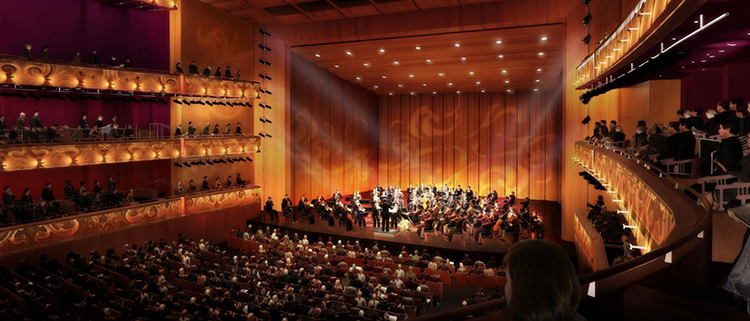
I was surfing the old interwebs one day not long ago, reading all manner of stuff, when I came across a note from a guy who said he was planning to go out and grab another subwoofer because, in essence, he wanted “more bass”. My first reaction was, why don’t you run out and get a bigger sub to replace the one you’ve got?
But then I started ruminating on my current setup. I was running dual subs in my theater at the time. The manufacturer whose system I was reviewing outfitted me with two subs because of the size of my room relative to the output capabilities of his subwoofer products (based on the room’s overall internal volume). Once installed, I didn’t feel that the subs needed to be doubled up because they were in fact very capable products and one would suffice for my needs. But what I did experience was the real payoff for additional subwoofers: smoother, flatter response throughout the room. This is the real reason to consider multiple subs in a domestic environment, to even out the bass response. In fact, many manufacturers recommend two, three, or four subwoofers for their customers.
In my case, I bought a house that had a fine sounding room with a blank wall where I could place my display without having to crane my neck because the TV was above a fireplace or window. But a few years ago, we got new carpeting with an extra thick pad and refaced our fireplace with slate tiles. These two changes somehow made an impact on the bass response. Up until now, I just used equalization either in the sub’s plate amp or via my surround sound processor. This is not ideal for a number of reasons, and there are better ways to get smooth bass. So I decided to do a hands-on experiment related to multiple subs.
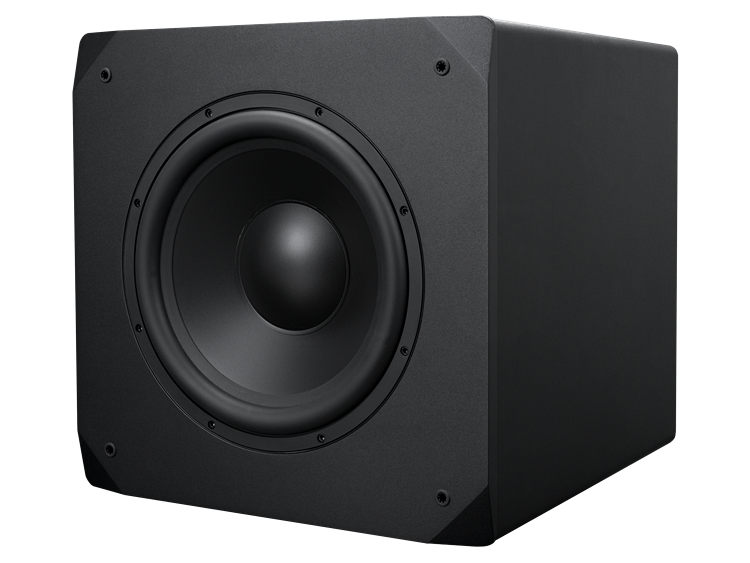
My first call went out to Emotiva, the high quality, value-priced champion of the audio world. I called them first because they had recently launched a line-up of relatively compact subwoofers that wouldn’t break the bank. I requested pair of the Emotiva BasX (pronounced “basics”) S12 subwoofers to use in my experiment.

I want to share a few notes on these subwoofers before I get into the meat of the experience. They are 12” single driver subwoofers, powered by a 300 watt RMS internal Class D amp. These are packed into a flat black textured vinyl enclosure of High Density Fiber Board (versus the more common Medium Density variety). This slot-loaded enclosure is roughly an 18” per side cube. Each sub weighs in at 48.5 lbs and though they have an industrial appearance, I found the chamfered corners and overall look to be sufficiently fetching that I had no reservations about having them out on full display.
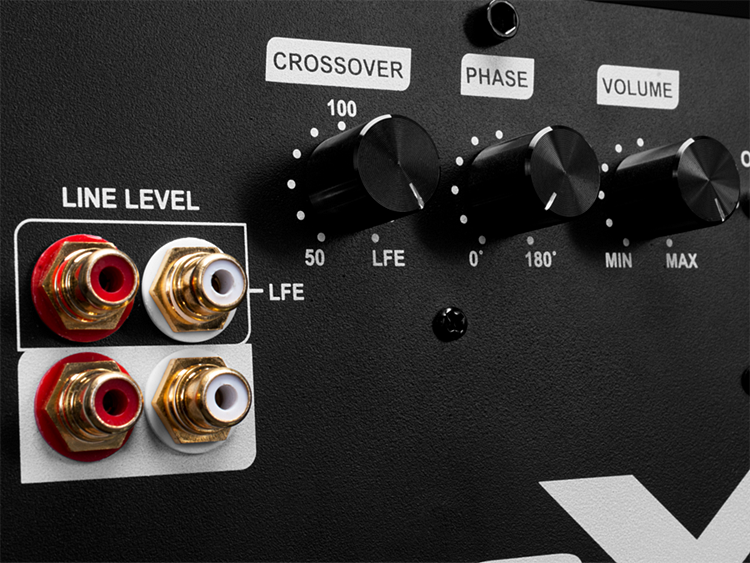
The most amazing part is that they can be had for $399 each, factory direct. My reference sub is an SVS SB16-Ultra sub which costs $1,999. So you could get up to five Emotiva subs for that same price. I mention this because I tested out a single BasX S12 subwoofer as a baseline reference before installing both in my system.
The SVS is rated to extend down to 16 Hz, while the BasX reaches 25 Hz (both manufacturers’ claims). This disparity is to be expected. What I didn’t expect was how small the actual difference that was heard. The BasX sub had less extension, more distortion, and didn’t play as “tightly”. All these things were apparent. But what struck me though was how close the Emotiva was to the much more expensive option. They had more in common than different if you know what I mean. So my conclusion was that I could happily live with a single Emotiva BasX S12 sub and, absent a direct comparison to a sub that is 5x the cost, I would not have felt as though I were missing a whole lot along the way. This Emotiva BasX S12 proved to be an impressive little woofer.
All rooms have boundaries (i.e., walls, floors, and ceilings). The sound waves in the room rebound off the walls and reflect about in various ways dependent on many factors. The sound waves also interact with objects in the room. The relevant factors that affect room acoustics include so many possible permutations that it is nigh on impossible to list them all. One parameter would be the coefficient of absorption (the % of the sound is absorbed by an object or boundary). This coefficient changes with frequency and is difficult to model. You may also have bookcases or wall treatments that functionally operate as diffusers. These can have a variety of effects depending on their makeup and room position.
There are many great tomes available to the acoustic engineer that line out all the principles of room acoustics, and I’ve read a few. In the modern era, we have very accomplished computer hardware and software that use numerical methods to estimate what will be the acoustics of a planned space, either new or retrofitted.

Where I live in San Antonio, Texas, for example, our historic Municipal Auditorium was shut down for many years following a devastating fire. The City eventually refurbished the auditorium in the most beautiful way possible, and they had the wherewithal to hire a top acoustic engineering company to do the interior design.
The design was based on a previously-deployed stage shell known as the “Diva Shell” from a company known as Wenger. The rest of the space was designed using software that modeled the acoustics. So here we have a newly renovated acoustical space that was designed with proven technologies, and the best modelling software, and guess what? It is nevertheless “tunable”. Here is a quote from the Prime Architect’s website:
Secrets Sponsor
“From this starting place, the acoustics are highly adjustable to suit the specific needs of each performance type. Tunable absorption elements can dampen the hall’s resonance for performances where a more articulate sound is desirable, such as theater, spoken word, and amplified music. A carefully designed forestage reflector couples with the orchestra shell for symphonic music and has two settings that balances sound between the stage and orchestra pit for opera and ballet. In addition, an electronic sound reinforcement system—tailored to the room’s acoustics—supports amplified performances such as touring Broadway shows and headliner acts.”
So despite all the planning that went into this design, they had to take real measurements and hand-tune the space in the actual world and not just on paper. Then they set it up for various use types because they each use has its own requirements for best sound. And I can tell you this is one of the best concert halls I have ever had the chance to visit. Bravo!!!
There is a point to all this rambling I’m doing, and that point is how then could a home theater enthusiast have any chance of getting great sound when they don’t have all these same tools at their disposal? Well the last part of what I said above applies to you too. Do some math to see what to look out for, and then tune things manually, because no computer software can possibly accommodate all the variables that come into play. Measure with instruments and with your ears as well.
The focus of this article is to concentrate on the bass response in my room which will, in some ways, correlate with your theater space. In the case of this experiment, we are only concerning ourselves with the bass tones below about 300 Hz. Take a look at the below readout I got when testing a pair of MartinLogan speakers in-room. This is pink noise and you can see the response above 300 Hz is pretty uniform. It’s all the peaks and nulls below 300 – 350 Hz that we need to concern ourselves with.
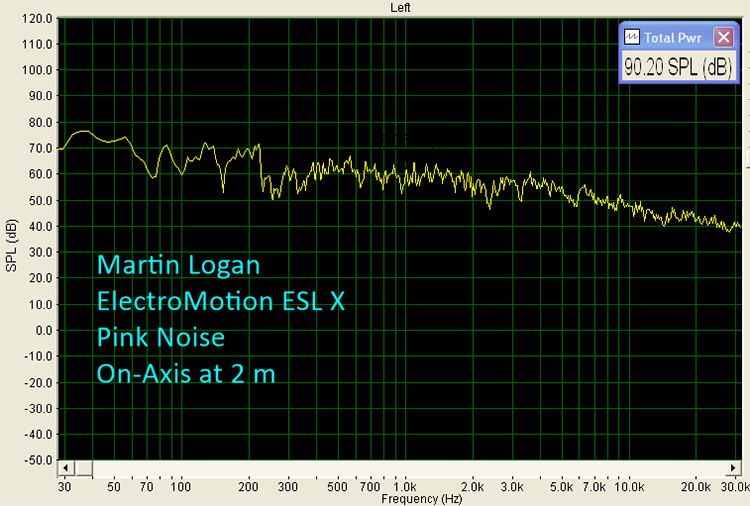
The reason bass notes have choppy response in real world spaces is because the boundaries of the room create resonances in the bass that are relative to the dimensions of the room. Think of a tuba. The performer changes the tone by pressing the valves, which changes the dimension of the column of air inside the instrument. A longer column of air produces lower notes, while a shorter column produces a higher tone. This is a corollary to what happens to bass notes in a room. The room’s dimensions dictate what tones will interfere with themselves and will thereby be boosted (peaks) and attenuated.
Room modes tend to store up energy and release the stored energy slowly, which interacts with other bass frequencies. This leads to boomy response and a lack of inter-frequency definition.
If you have an ideal room that is a perfect rectangle and the walls are infinitely rigid, then you can calculate the room modes that exist by using any number of online calculators. These are useful to predict the resonances that you will face. The simplest online calculator is the one provided by Harman International.
I also like this one from amcoustics.
I suggest playing around with these tools a little bit. What I want you to take away from this exercise is that the room modes create “standing” waves, and when you move the source and/or listener around the room, then you will pass through nulls and peaks. The calculators tell you what frequencies you need to watch out for and where will be the nulls and peaks. Also, the amcoustics tool guides you as to what are some good dimensional ratios for a room that will give you the best possible outcomes. My room is not within the “good” zone because it is way too symmetrical. This symmetry means that the axial and oblique modes in my room are very similar and build upon themselves to a deleterious effect.
Below is a readout I got for my room from the Harman Calculator. A few things to note here are that the axial modes relative to the room’s length and width are almost identical because these dimensions vary by just one foot. This is not good.

Another observation which has a more or less “universal” application is that the modes have the least impact at 1/3 points along each wall and in terms of the room’s height. Please inspect the center graph for a demonstration of this effect. The dimension of this wall is 20’. One third of 20’ is 6.67’. The point at 6.67’ on the chart indicates this is a region where the modes are generally not peaking or sucking out. (I added a green vertical line to highlight this point.) This is why placing your sub 1/3 of the room dimension away from the boundary is an excellent starting point for sub placement.
Also note that the response varies as you move around the room. This means that equalization can correct some locations in a room but may not help, and, in fact, may screw up other locations. Some room correction software attempts to ameliorate this effect by applying varying equalization in the time domain to compensate for various seating positions. This appears to work to a certain extent, but is by no means an ideal solution. My point is that rooms are screwed up in general, and equalization is a possible solution, but it is not the best solution for all cases and seating positions.
Another issue with trying to rely on equalization too much is that many automated systems try and fill in the room suckouts (nulls) by boosting the response at those frequencies of attenuated response. The problem with this is that the suckouts are like little black holes and trying to fill them by boosting those frequencies can lead to overloading your subwoofer and may also create a sense of strange pressure in the room that is not natural.
This is why people use structural methods like bass traps to tune their rooms. The experiment I am running here involves multiple subs and not bass traps, so we will discuss those in another article on another day.
By and large, these calculators are decent predictors of the global response qualities of a room, but in actual practice, you need to experiment on placement first, room treatments second, and equalization as a last resort. But make no mistake, if you are fortunate enough to be able to build your own space from scratch, then by all means use the amcoustic tool to help you start with a room shape that is conducive to good bass response. And consider making the ceiling slightly out of plumb. A high end dealer I know did this in one of their demo rooms and it was a great sounding room. (The ceiling was still a plane but tilted slightly on the diagonal. This was a brilliant idea.)
So, my room is nominally too symmetrical for good bass. But it is a real world space with facets that compensate for this weakness. I thought it would be best to demonstrate this with the quick video I shot and is embedded below.
On paper, my room is overtly symmetrical, but in reality it isn’t. And, modeling this type of space in a computer would be pretty intensive in many ways. In the end, even a good computer model would be of little use beyond an academic exercise because of the limited placement options for a sub.
I think you will agree that the front left corner is the most convenient and logical spot for a sub. This is a real world problem, not a theoretical one. Remember when I said the 1/3 point is a good starting spot? Well I could not place a sub at this point and maintain my existence with an accompanying expectation of domestic tranquility 🙂 That’s the point here: people’s subs tend to wind up where they can be and not where they want them to be.
Secrets Sponsor
What is the response like with a single sub at this spot in this corner? It is what I got in the below plot of the BasX S12 sub. This plot and the two others that follow were all taken with the mic at ear level in the prime seating position. I also bypassed all room correction/EQ in my system and fed the subs directly from my tone generator. The input signal was pink noise. The measured response in this case shows a major suckout at approximately 42 Hz. This is not the same frequency calculated by the Harman calculator and supports my theory that you need to measure your actual room to find out exactly what the heck is going on.
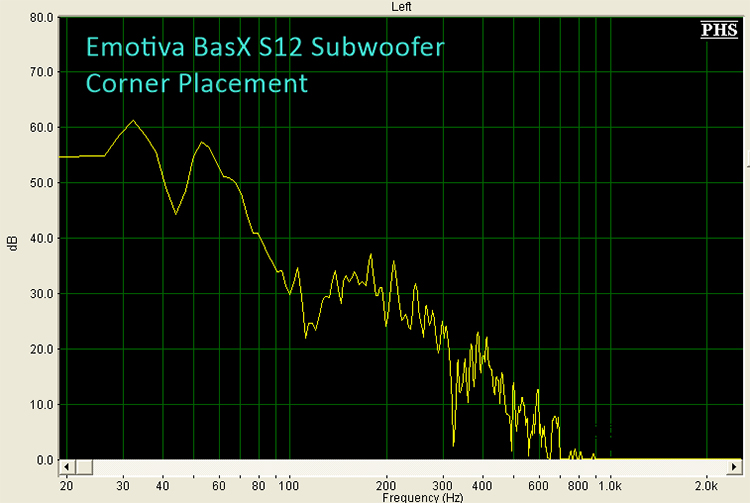
Another thing that jumps out at me is that the bass in my room starts to roll off between 50 and 60 Hz. This explains why I have always gotten the best results by crossing over to my mains at 60 Hz (versus the THX-recommended 80 Hz). I am at a loss to explain why the bass goes away like this, but it happens to all subs that are placed in that corner and then measured at the prime spot. So it is disconcerting but is not an issue so long as my satellites can do 60 Hz or lower.
This next plot is the second sub playing by itself. Note that the dip at 42 Hz is gone. Also note that this position has less bass extension than the above plot. This is not surprising as the first plot is a corner placement and that is where you typically get the greatest bass reinforcement.
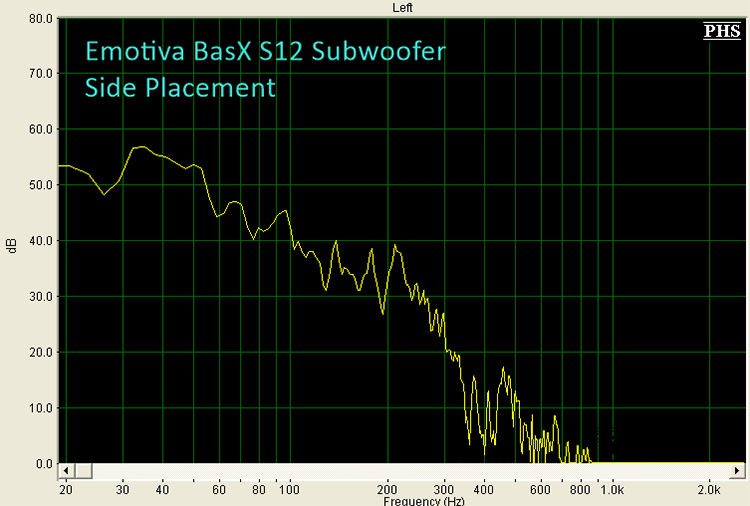
The third plot below is the plot I got when I ran both subs simultaneously. I used a splitter coming from the tone generator to feed both subs. I did this to ensure they both received the same, correlated test signal. I also balanced each sub’s output so they were identical from each woofer.
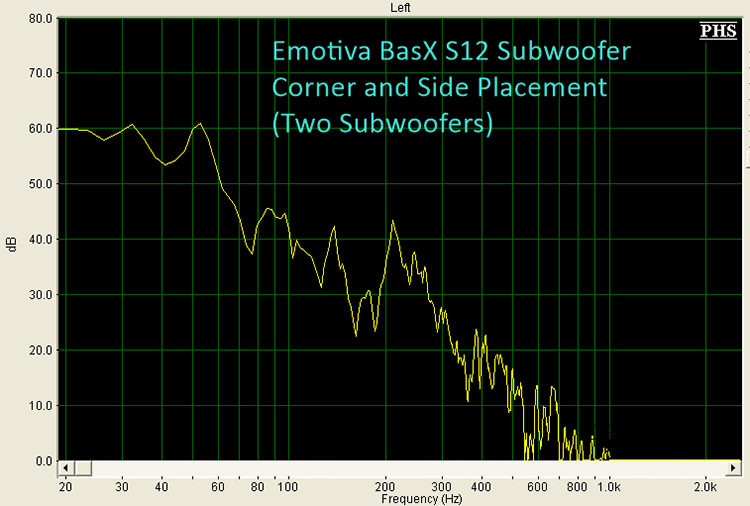
You can see that this combined plot melds the two together and smooths out the response quite nicely. There is still a dip but it is less than 8 dB which is actually quite good in the bass region. You can also see there is more output and the bass extension reaches deeper as well. The response from 20 Hz to 55 Hz is substantially flatter, and this is a critical region for subwoofers. However, I still have to set my crossovers at 50 or 60 Hz for the satellites as the two subs working together could not increase the upper cut off.
Earlier I wrote that the point of multiple subs is not just to increase output, but I will say that it is a useful benefit. In theory, if you could place two identical subs in a coincident location and feed them a correlated signal at the same gain level, then the SPL should increase by up to 6 dB. In my case, the increase in SPL with both subs was actually 4.8 dB. This is a very significant increase in output.
This overall improvement really did enhance the listening experience. Take a movie like Blade Runner 2049. The bass in this movie is almost like its own “character” the way it is used to elicit certain feelings at different times. I watched this 4K Blu-ray while I had the dual Emotiva BasX S12 subs in my system. During the hypnotic scenes where the bass is just messing with your mind, I found myself simply enraptured. The subtlety of the bass and each step or half step was clearly heard over these super bad ass little subs. It was a mind bending experience.
The subs also laid down a lithe and brilliant performance on a music-oriented movie like Coco. My experience with dual subs was certainly a success, and I think I will be using two subs for the foreseeable future.
Multiple subwoofers will improve the bass in your listening room. The most cost-effective way to do this is to purchase several less expensive – but good quality – subwoofers. The Emotiva BasX S12 subwoofers, at $399 each, sure did an excellent job in my listening room. I encourage all of you to give this a try for yourself and see how well multiple subs may work in your setup.





